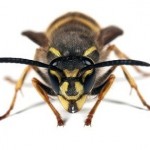By now, most people have become aware of the fact that the number of bees in the world has been decreasing steadily for more than a decade. Experts are calling this global decrease in bee life “colony collapse disorder.” CCD is caused by several factors, such as habitat loss and disease, but recently researchers found yet another threat to bees–Asian hornets. The Asian hornet should not to be confused with the Japanese giant hornet, which is a highly aggressive and venomous wasp species that has caused several human deaths in Europe over the past fifteen years. Asian hornets, on the other hand, are not any more harmful to humans than native wasp species in Europe, but they have been feeding on Europe’s native honey bees for several years. One single Asian hornet can kill as many as 50 honey bees per day. Naturally, the Asian hornet’s uninvited presence in Europe is of serious concern to beekeepers on the continent. The invasive Asian hornet presence in Europe has been growing steadily since it was introduced back in 2004. As a result of its years of killing the economically important European honey bee species, Asian hornets have been targeted for extermination by everyday Joes living in the United Kingdom. The British citizens are hoping to save the native honey bees in their country by doing their part to destroy Asian hornet nests wherever they are found. Unfortunately, these citizens have been killing native hornets after mistaking them for Asian hornets.
According to a British wildlife charity known as Devon Wildlife Trust, British citizens are doing more harm than good with their attempts to kill invasive Asian hornets. The charity’s spokesperson, David Hussey, claims that some people call in asking if it is okay to kill the “Asian hornet” nests that they find, while others call in to claim that they had already destroyed “Asian hornet” nests. However, after visiting these locations, officials with the charity learned that every one of these citizens actually destroyed native European hornets (Vespa crabro) as opposed to invasive Asian hornets (Vespa velutina). The inadvertent killing off of native hornets will only contribute to the current loss of hornets that are native to Europe. Native European hornets are major players in the region’s ecosystem and they help to keep insect and spider pests at bay. Ever since 1987, killing native hornets has been illegal in Germany due to the dramatic decrease in their population. Unintended consequences like this is why insect pest eradication should best be left to experts.





